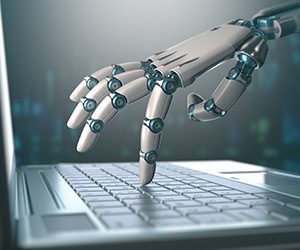 Artificial intelligence (AI) will continue to contribute to innovations this year. I think some industries will embrace the change and some will resist for various reasons, including job displacement and trust. Our world is changing already in terms of the tasks that computers take on. Let’s examine some of the ways that AI will change how we work in 2017 and beyond.
Artificial intelligence (AI) will continue to contribute to innovations this year. I think some industries will embrace the change and some will resist for various reasons, including job displacement and trust. Our world is changing already in terms of the tasks that computers take on. Let’s examine some of the ways that AI will change how we work in 2017 and beyond.
Definitions
AI is simply a set of cognitive tasks that can be handled by a computer. Some AI functions incorporate vision and robotics but do not necessarily resemble Arnold Schwarzenegger’s dangerous “Terminator” character. Think of the hundreds of decisions that you make every day and which of those decisions could be best made by a computer, thus freeing you up for more creative and innovative tasks. Another term associated with AI is machine learning. That is the ability of a computer to learn from past cognitive decisions and make corrective choices, similar to how we learn from our mistakes and change our thinking in order to produce a better outcome.
Security
In a recent InformationWeek article, the author is hopeful that AI advances will help solve a skills shortage in the cyber security field. Right now, computers are used to gather data on threats and potential threats to weed out erroneous information and help security professionals formulate a mitigation strategy. In the future, the computer will also be left to formulate and institute the threat response as well as gather the initial data. Far from displacing security personnel, it will free them up to work on higher level tasks such as business continuity and refining the data collected and filtered. In this case, AI provides another pair of hands but security professionals will continue to be in as high demand as they are now.
Automotive Applications
One of the AI applications I am most excited about is automotive. I have written about this in the past and there have been some real breakthroughs recently. One practical application of AI is Ford’s new Pro Trailer Backup Assist. I cannot back up a trailer to save my life; I was denied that gene when I was born. Somehow the trailer appears at my side whenever I try to back into a spot. With backup assist, the driver removes their hands from the steering wheel completely and backs up by using a small knob on the dash. Turn the knob to the right and the trailer moves to the right. This is just the opposite of trying to use the steering wheel and certainly much more intuitive. This is an example of machine learning using vision and computing algorithms. Another even more radical example is the upcoming autonomous vehicle. These vehicles make constant decisions based on sensor input from around the vehicle to safely transport a passenger.
Danger Zones
Robots using machine learning differ from simple drones in that they make independent decisions based on past experience. A drone is controlled by a human operator and cannot function independently. An example of independent robot development is CHIMP from Carnegie Mellon University. CHIMP will be used in industrial application and for search and rescue when the situation is too dangerous for humans. It makes decisions based on instructions, experience, and multiple sensor input.
Thoughts
These are just a few AI applications, with a lot more to come. Are there tasks or decisions that you would just as soon leave to a computer? Do you trust the systems to make those decisions? This is a brave new world and it will take a leap of faith before some of these developments become completely commercialized. Let me know your thoughts.
Kelly Brown is an IT professional and assistant professor of practice for the UO Applied Information Management Master’s Degree Program. He writes about IT and business topics that keep him up at night.




